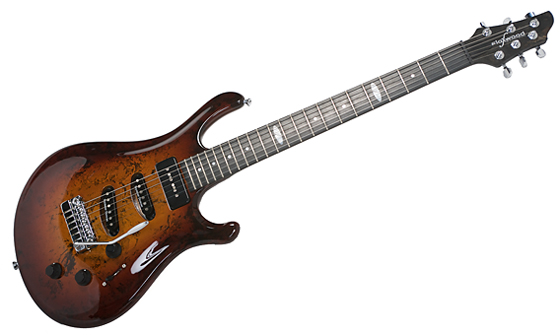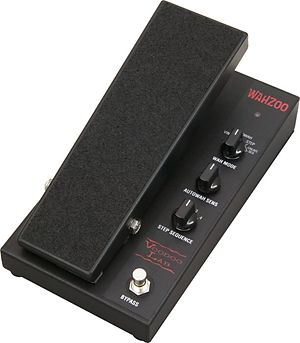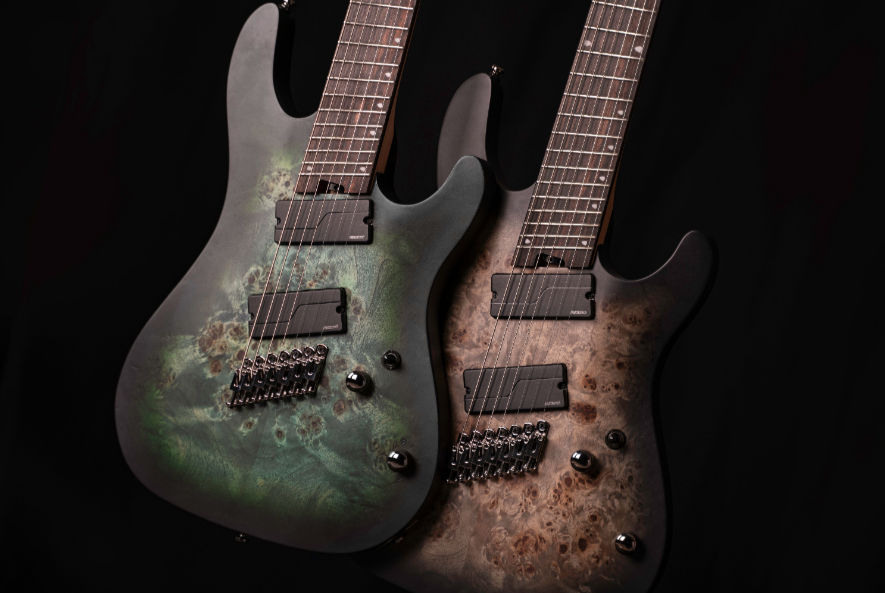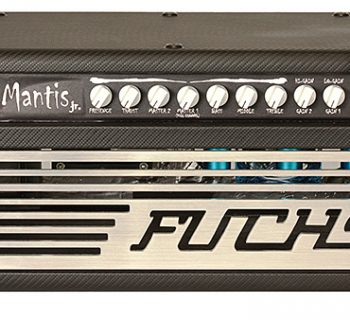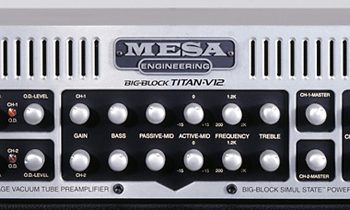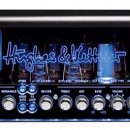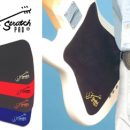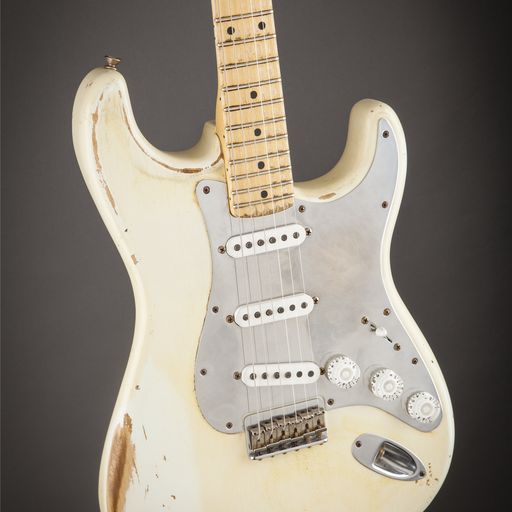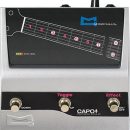“Look! Up on the stage! It’s a birds-eye maple. No, it’s a Koa. No, it’s a… Flaxwood!”
The Flaxwood 3S-T Haarii Special electric guitar comes to us from Finland, and it rivals the best guitars from any other part of the world. But what truly sets it apart, other than the expert craftsmanship and sublime playability, is the fact that it is made from recycled wood!
| Category | Value | Rating |
| Features | 20% | |
| Usability | 25% | |
| Sound | 25% | |
| Documentation & Support | 10% | |
| Price | 20% | |
| OVERALL RATING = 3.2 3.6 stars or better: Outstanding, WIHO Award 3 stars or better: Worth considering 2 stars or better: Suited to specific needs 1 star or less: Not recommended |
||
Technically, flaxwood is a proprietary material that combines spruce wood chips (fresh growth, certified sustainable) with an acoustically resonant binding agent. The concept was to develop a wood-like material that exhibited a uniform response to vibrations, unhindered by naturally occurring flaws in wood such as knots. The wood-based material is poured via an injection molding process into shape for the bodies and necks and then hand finished by luthiers.
The result of this technological innovation is fantastic, and Flaxwood guitars are the first alternatives to traditional wood that we’d be happy playing. If you haven’t found guitars made with carbon fiber bodies to be your thing, you should definitely give Flaxwood a chance. The 3S-T bears more in common tone-wise with a traditional wood guitar than other alternative materials. But even this commentary isn’t entirely accurate as it might lead you to think of the guitar as sounding like something different from wood. Instead, just think of Flaxwood as another premium electric guitar company who just happens to use eco-friendly building materials.
The semi-hollow 3S-T Haarii Special we tested delivered a wide range of tones that included familiar Strat-like tones as well as some 335 jazz goodness thanks to its interesting combination of single coil and P90 pickups. The guitar was light and comfortable to play, with a fantastic neck that combined classic comfort with modern playability. If you’re a fan of Strat tones but want a guitar with a little more of a unique vibe, the 3S-T is definitely worth checking out (as are all the Flaxwood models), though this particular model isn’t appropriate for metal and other high-gain players.
Features
 Flaxwood 3S-T Rear PhotoThe 3S-T Haarii Special has a beautiful Saraste Tobaccoburst finish, and we can’t help but think that flaxwood would make an excellent countertop in our kitchen — it has a sharp, marbleized look to it… or perhaps it’s more like petrified wood.
Flaxwood 3S-T Rear PhotoThe 3S-T Haarii Special has a beautiful Saraste Tobaccoburst finish, and we can’t help but think that flaxwood would make an excellent countertop in our kitchen — it has a sharp, marbleized look to it… or perhaps it’s more like petrified wood.
Obviously, the material for the body and neck are flaxwood. Weighing a very comfortable 7.19 pounds, don’t expect any variance from one instrument to the next — this is injection-molded technology using a composite material; not traditional wood. However, it should be noted that the fretwork and finishing are done by hand by luthiers — it’s just the bodies and necks that are actually fabricated.
The body is a semi-hollow design behind the rear cover, a “resonating back plate” that spans the majority of the rear of the instrument. Although our first reaction was “that looks like a lot of plastic,” it turns out that the back plate is actually unfinished flaxwood, and thus it truly is a resonant part of the body.
The Haarii Special features a 25.5” scale set neck (glued) with a 12” radius and medium jumbo frets. The neck shape falls somewhere between a C and U shape and has a natural, silky finish.
The fretboard measures 20.5mm at the first fret and 23mm at the twelfth, and it is adorned with mother of pearl inlays. A stylized “F” adorns the inlays at the fifth and twelfth frets.
The Gotoh SG360 tuners are very cool — they lock automatically without having to manually tighten or loosen anything! The custom developed self-lubricating Tune-X nut is visually striking and designed to improve intonation without requiring any special tuning technique like other compensated tuning systems.
The body features a somewhat unique pickup configuration: two Seymour Duncan SSL-6 single coil pickups in the bridge and middle positions, and a Duncan SP90-1 Vintage Soapbar at the neck. A five-way blade selector provides for a traditional selection of tones, but greater variety is added from a Blend control. In addition to the standard Volume and Tone knobs, the third one mixes the neck and bridge pickups whenever at least one of them has been selected on the five-way switch.
The bridge is a Schaller LP Tremolo model. We’re surprised more builders don’t use this since it’s available for OEM building and not just as a replacement part for Gibson upgrades. It floats for pitch up and down operation, with a tension control to adjust the arm position.
Usability
The 3S-T plays like butter and sounds like wood! The neck is fantastic, and its natural, satin-like finish felt vaguely similar to a carbon fiber neck. Because the Haarii Special is made from a mostly synthetic material, the guitar is not subject to moisture-related variances that can drive guitarists crazy.
Although the neck is on the thicker side — similar to a vintage Strat in feel around the back, but with a very flat fretboard on top, the combination of flat fretboard, natural finish, and medium jumbo frets made it easy to shred up and down the neck. The edges of the fretboard (and the frets) were nicely rolled, giving the feeling of a well worn-in, vintage instrument. The rounded neck heel was completely unobtrusive in playing leads up to the 22nd fret.
The guitar is well balanced, and its light weight made it a pleasure to play both seated and standing.
 The rounded edges of the body make it a pleasure to hold for extended sessions, and the very dense flaxwood material seems harder to ding than typical wood finishes. That said, we chucked it around and dropped it a few times to see what kind of damage we could inflict. Just kidding — our wallet isn’t fat enough to subject loaner guitars to real-world drop tests! Further good news is that overall, the 3S-T felt like a wood guitar, unlike some instruments we’ve played before that were made from alternate materials like carbon fiber.
The rounded edges of the body make it a pleasure to hold for extended sessions, and the very dense flaxwood material seems harder to ding than typical wood finishes. That said, we chucked it around and dropped it a few times to see what kind of damage we could inflict. Just kidding — our wallet isn’t fat enough to subject loaner guitars to real-world drop tests! Further good news is that overall, the 3S-T felt like a wood guitar, unlike some instruments we’ve played before that were made from alternate materials like carbon fiber.
The 3S-T has a great Schaller tremolo. The bridge is fixed in front, and the rear half pivots on a set of five springs. With this clever design, the string height never varies with pitch bending, providing for precise pitch control over our bent notes — even when bending notes a full step down. The bridge was very unobtrusive, and resting our hand on it never resulted in unwanted pitch changes.
The five-way blade switch was standard fare, and it was easy to perform volume swells with our pinky thanks to the low-friction plastic knobs with a rubber ring around them. However, we would have preferred a center detent on the knob that controlled blending between the neck and bridge pickup for more accurate reference and tone setting.
Sound
It’s a Strat. No, it’s a jazz guitar. No, it’s a rock guitar. Well somewhere in between all of that is where you’ll find this versatile guitar. We were skeptical at first — another synthetic instrument pretending to be a wooden instrument, you know. But the Flaxwood 3S-T does indeed sound like a real, wood guitar. And more specifically, the 3S-T sounded and responded sonically a lot like a Strat-style guitar.
We played the Flaxwood 3S-T Haarii Special (what a name!) through a variety of tube amps including a Fender Super-Sonic, Mesa/Boogie Lone Star and Road King II, and an ENGL e580/850 rig in order to see how the guitar measured up to its “natural wood” cousins. But our first experience came from playing the instrument unplugged, and the semi-hollow body had a well-defined and resonant unplugged sound.
Each of the pickup combinations from the five-way blade switch provided familiar sonic choices, and the notched positions in between the neck and bridge provided plenty of that classic “spank” we’ve all come to associate with Stratocaster-style guitars. It was easy to coax a wide range of beautiful clean tones from this guitar.
The blend knob added a wide variety of tones to the palette. In any of these three positions: bridge, neck, and neck + middle (position 4), the blend control enabled us to dial in a blend of the opposite pickup. Adding the neck P90 to the bridge pickup, for example, thickened the tone while softening the high end to varying degrees based on how we set the mix. And likewise, adding the bridge pickup to the P90 in the neck let us add some clarity to the bluesiest sounding pickup selection.
However, we found the blend knob more useful in the studio use than actually practical for live use. As mentioned in Usability, a center detent might have made it more useful to us, as the light-touch knobs can be easily adjusted, and we don’t like extraneous controls on our instruments that require constant attention to make sure of where they are set. If you want a nearly limitless ability to tweak your guitar tone from subtle to significant, though, you’ll be a much bigger fan of this control than we were.
The Seymour Duncan SSL-6 single coil pickups and SP90-1 Vintage Soapbar pickup all have a vintage flavor to their sound, complete with some vintage pickup noise. Although not an issue when playing clean and slightly dirty sounds, when used in a high-gain situation, there was enough noise that found ourselves reaching for a noise gate.
The Fender Super-Sonic, with its Bassman and Vibrolux voicings, fit this guitar like a hand to a glove, and it spanked us silly with its clean, jangly pop tones. As you might expect, it was also right at home with the Mesa/Boogie Lone Star. The neck P90, combined with the semi-hollow instrument design, provided plenty of smooth jazz flavor, and the guitar was well suited to playing those gigs where you just don’t feel like taking out your 335.
Unlike true vintage instruments, the Seymour Duncan pickups had medium to high output, and the 3S-T had no trouble driving our high-gain amps. Although not ideal for tapping your way through a Van Halen solo, there was plenty of gain left for classic rock rhythm crunch. We’ve played other instruments made from composite materials that lacked proper sustain and response when paired with high-gain amps, and happily this guitar didn’t suffer any particular limitations in that regard.
However, the 3S-T isn’t a guitar we’d reach for in the high-gain scenario. Metal, prog, and shred players would be better served by other models than the Haarii Special. The semi-hollow design and vintage pickup noise yielded two strikes against using the guitar in those scenarios. The high gain overdrive from our ENGL and Boogie rigs brought out a tone that was at times reminiscent of early piezo pickup “quack” — a sort of hollow, microphonic tone, along with plenty of noise.
Documentation and Product Support
Our 3S-T Haarii Special didn’t include any documentation, but the website had very helpful information including a video demonstration of how to change strings with the self-locking tuners.
The website also provides information about flaxwood and the manufacturing process.
Price
The Flaxwood 3S-T Haarii Special (MSRP $3,498) sells for approximately $2,350, including a Gator molded hard case. Although not the cheapest Strat-like guitar on the block, it is priced comparably with other premium electrics, and the neck plays as good as anything you’ll get from other boutique builders.
Choosing a Flaxwood guitar over more common alternatives ensure that you’re doing your part to help save the planet, though we still encourage you to keep up with recycling at home.
Contact Information
Flaxwood Guitars
www.flaxwood.com
Evaluation Short-List
- XOX "The Handle" Guitar (Carbon Fiber)
- Aristides 010 (Arium)
- Fender Stratocaster (Wood)

